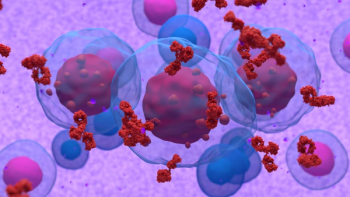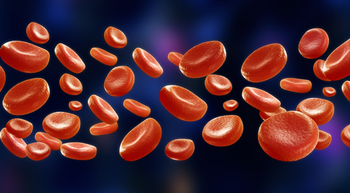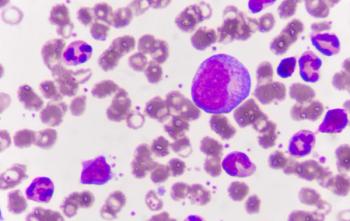
Independent 2-Nurse Verification Process in Distribution of Oral Investigational Chemo/Immunotherapy Proves Helpful

Independent verification of documentation is paramount to patient safety.
The implementation of a verification process for the distribution of investigational agents to patients to take orally on their own has proven efficacious at Smilow Cancer Hospital, according to a presentation at the 47th Annual Oncology Nursing Society (ONS) Congress.
“Independent verification of documentation is paramount to patient safety. With high-risk medications, verification administration and documentation of oral investigational chemotherapy and immunotherapy agents had not been in alignment with our policy,” Jeramy Tabuzo BSN, RN, OCN, clinical trials oncology nurse, Smilow Cancer Hospital, Yale New Haven Health in Connecticut, said during her presentation at the Congress.
“Pulling together an interdisciplinary team has created a new process that we developed and implemented to ensure patient safety and practice according to our institutional standards.”
At Smilow, a National Cancer Institute (NCI)-designated Comprehensive Cancer Center, Tabuzo and colleagues administer oral investigational chemotherapy drugs as part of their ongoing phase 1 trials. Through the administration process, patients receive their drug bottle on day 1 of the study, and are responsible for taking the agent at specific time points thereafter.
Their phase 1 clinical trial infusion unit is comprised of 12 infusion chairs, where they see 12 to 20 patients per day, across 142 active trials. Among these trials, there are approximately 64 oral investigational trials.
“In 2018, our nursing policy on chemotherapy verification was revised and required nurses to practice independent verification at the bedside, or chairside,” explained Tabuzo. “However, the infrastructure of our electronic medication administration record does not support our practice and policy.”
For example, she added, the oral drug released to the patient is not on electronic Medication Administration Record (eMAR) and has not allowed for barcode scanning at the time of disbursement and administration.
Therefore, Tabuzo and her colleague aimed to safely administer oral investigational chemotherapy and immunotherapy agents in accordance with current nursing policies; in particular, through completing dual independent nurse verification and appropriately scanning and documenting oral drug administration.
To do so, they had a committee of 6 individuals, comprised of the EPIC/Beacon coordinator, a pharmacy application IT specialist, an oncology pharmacist, an investigational drug services manager, a nursing professional development specialist, and an infusion nurse. The committee identified components that needed to be changed for new processes to improve workflow and dispense and administer oral medications that allow for independent 2-nurse verification through barcode scanning.
In turn, once these processes were developed, the committee educated and dispersed the new processes to nurses, pharmacists, and physicians. Lastly, the process was then implemented across the Smilow ambulatory units and 15 infusion care centers.
The new process consisted of:
- Ordering for oral investigational medication in the treatment plan.
- Once released, transferring the order to eMAR.
- The pharmacy creating a process to generate the barcode label for scanning the oral investigational drug bottle.
- At the chairside, 2-nurse verification process occurring.
- If there are no discrepancies, nurse 2 signing off MAR, and nurse 1 proceeding to dispense the drug bottle.
- The patient self-administering from the bottle dispensed on day 1 of treatment.
- Documenting the patient self-administered the agent, using the smart phrase, “.oralinvestigational” in the nurse’s note.
“Smart phrase is a function in EPIC that we utilize to create the standardized text that can be inserted into the nurse’s notes,” explained Tabuzo. “In our case, if you type in ‘.oralinvestigational’ that will populate the notes with the treatment cycle, the HIC number, the drug name, the dose, and the time that the patient took the medication. The standard documentation supports consistency and efficiency for research data collection.”
Compliance to the new workflow was evaluated by monitoring the number of safety events reported through the electronic event reporting system at Smilow. The system evaluated incorrect bottles dispensed, incorrect doses, and incorrect medication labels. Moreover, barcode scanning compliance was audited using an automated report.
“We also saw direct feedback from nurses, pharmacists, physicians, and clinical trials office staff. To date, nursing has been [satisfied] with [the] policy and no safety events have been reported,” Tabuzo said.
Reference:
Tabuzo J, Mancini KA. Oral Investigational Chemotherapy/Immunotherapy Verification Process. Presented at: 47th Annual ONS Congress; April 27 – May 1; Anaheim, California. Presentation O26.
Newsletter
Knowledge is power. Don’t miss the most recent breakthroughs in cancer care.

















































































